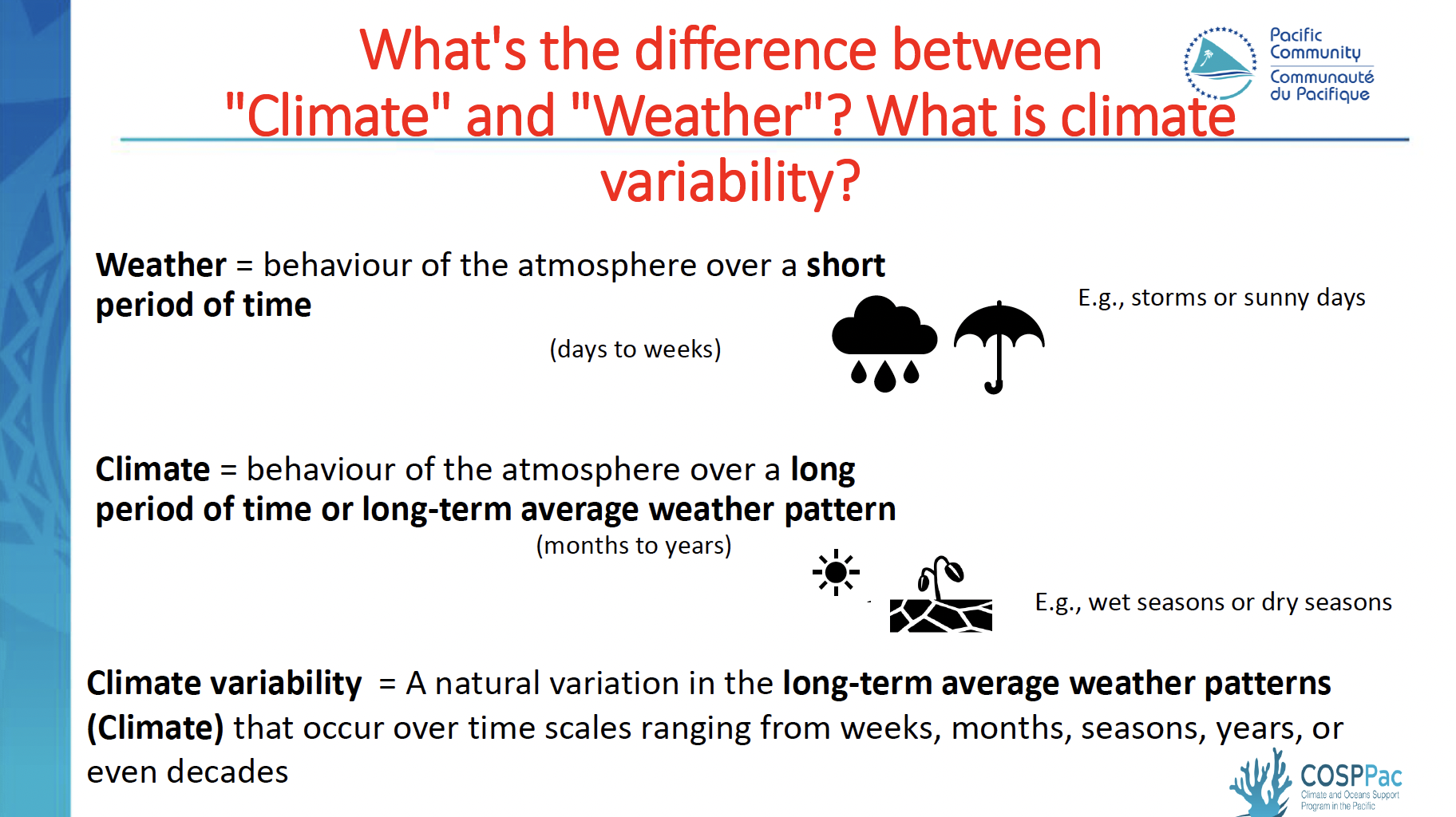Continuing with my Climate Change in Fisheries Series (CCFS), here is my 2nd on the Exploring Climate Variability Presented by Moleni Tu'uholoaki, from SPC.
I knew about him before, but I was very impressed by his skills and general “mana” while presenting very composedly and clearly. He also spoke about how CC is impacting Tongatapu, where he worked for almost 20 years.
He started by defining climate variability, which are natural fluctuations in climate patterns, as well as providing an understanding of short-term variations and their impacts on weather patterns.
The presentation covered various topics related to climate change and its impacts. It emphasised the importance of understanding climate variability and its effects on weather patterns. The topic of climate variability in the Pacific was explored, focusing on the impact of large-scale climate drivers. The discussion covered the West Pacific, the role of warm water and wind, and the Southern Hemisphere's atmospheric and oceanic systems.
He has analysed rainfall patterns in the Pacific, tropical cyclones' formation, and climate change's potential impacts. He mentioned ongoing research and the need for extensive data to differentiate between climate change and natural variability.
This talk explored major climate variabilities in the Pacific. It discussed the distinction between weather, climate, and climate variability, including various factors influencing the climate, particularly large-scale climate drivers, which were responsible for large-scale variations in rainfall, temperature, and sea level distributions at a scale of weeks, months, years, or several years and even decades in the Pacific.
The key drivers of climate variabilities in the Pacific, such as the Western Pacific Warm Pool (WPWP) Intertropical Convergence Zone (ITCZ), South Pacific Convergence Zone (SPCZ), Trade Winds, the Madden-Julian Oscillation (MJO), El Niño–Southern Oscillation (ENSO) were discussed. This included their variations due to movements and intensity that impact weather patterns in the Pacific.
A reference to changes in winds, temperature, tropical cyclone genesis and sea level with different phases of ENSO in Tonga is presented to highlight the need to redefine ENSO at the local scale. There was also a discussion on an unusual variation of sea surface temperature anomalies and the position of the SPCZ in January 2024. This resulted in the highest monthly rainfall ever recorded in Tongatapu, which is uncharacteristic during El Niño events.
Discussion
Local impacts on different islands during ENSO changes were discussed. In Tonga, during the recent El Niño, the ocean was unexpectedly cool. This is due to the wind driven upwelling locally, resulting in Tongan local conditions being different from the overall general predictions. As a result, while you can have broader subgroupings of areas, island-specific information will likely show that each country will be different and will need to be investigated separately.
The SPCZ moves south in La Ninia events, but the most recent event seemed to have been the most extreme. It was highlighted that seasonal variability can mask the changes of climate change as such when evaluating the scale of climate change the long-term effects need to be assessed in order to overcome the interannual and seasonal fluctuations. But more local long-term records will help elucidate what these impacts may be for local communities.
Lastly, it was highlighted that the concepts of ENSO are challenging to convey to the public, and it is difficult to get the correct messages across. It considered that the best way to convey these messages was in terms of impact, as that is something that people can relate to.


